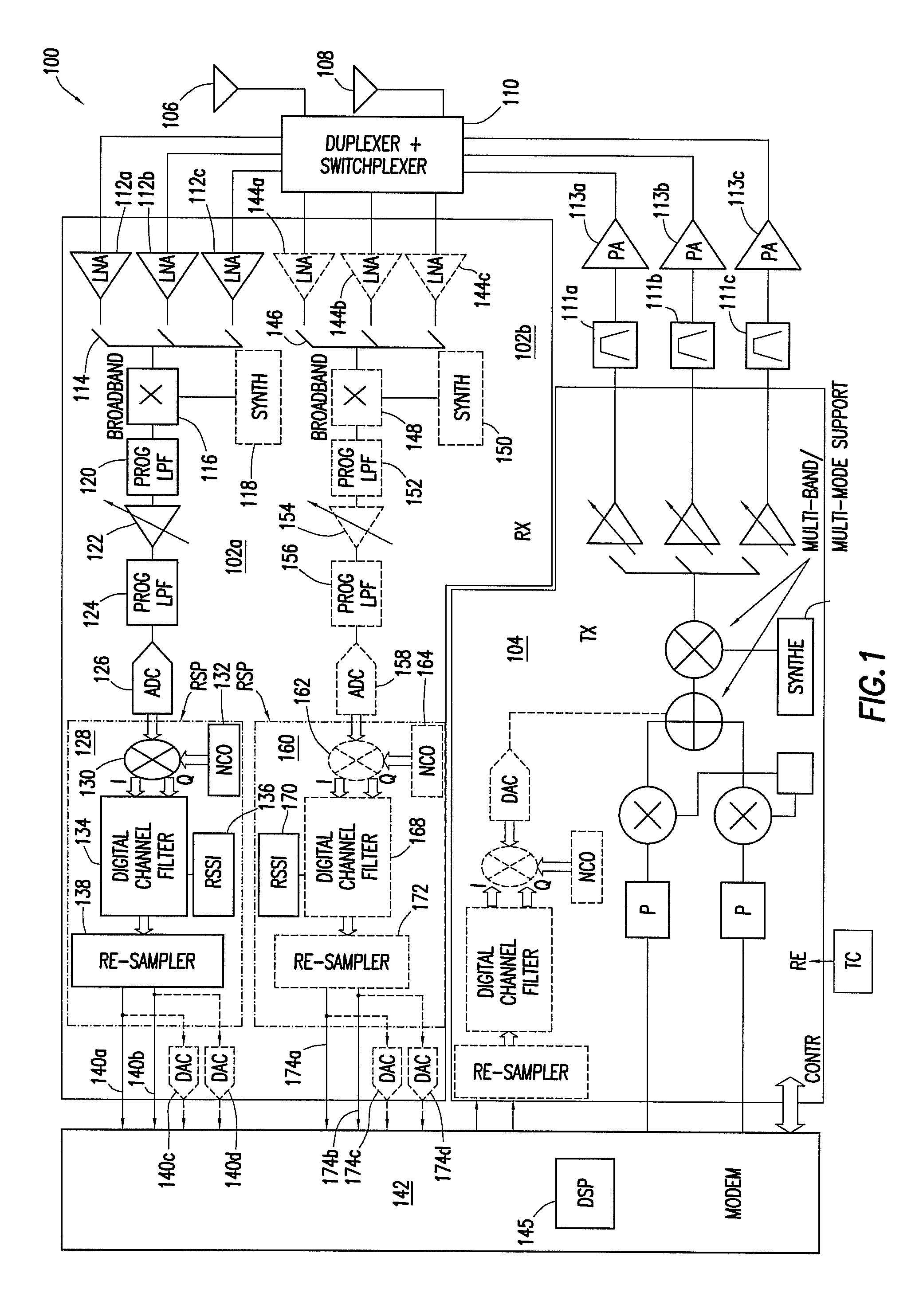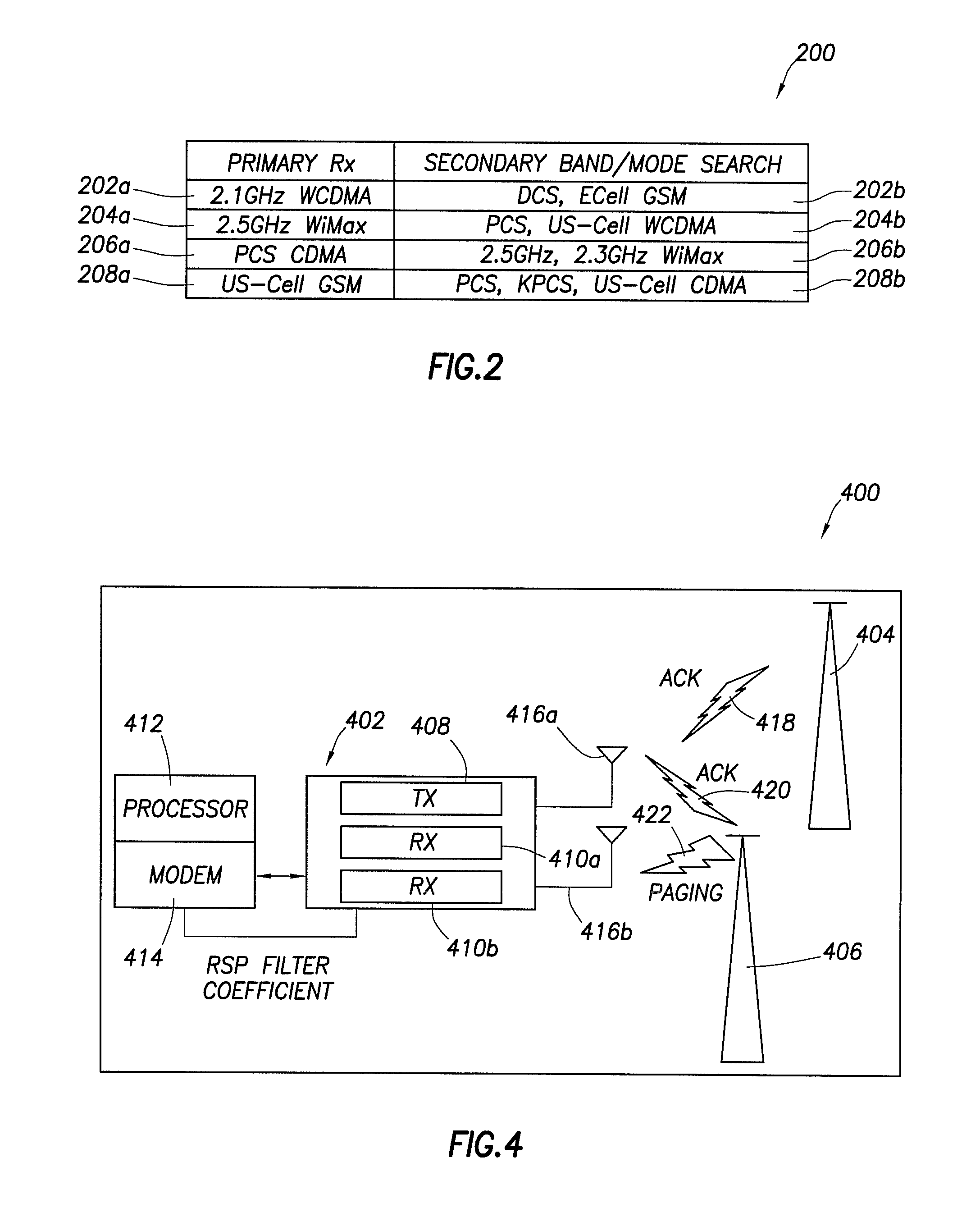Reconfigurable wireless transceiver
a wireless transceiver and reconfigurable technology, applied in the field of wireless communication, can solve the problems of inability to reconfigure the existing wireless transceiver, inability to support dynamic over-the-air programming or tasking, and the design of the transceiver does not support concurrent over-the-air programming while the other receiver is no
- Summary
- Abstract
- Description
- Claims
- Application Information
AI Technical Summary
Benefits of technology
Problems solved by technology
Method used
Image
Examples
Embodiment Construction
[0012]Example embodiments of a reconfigurable wireless transceiver and method of use are described. In one example embodiment, the wireless transceiver includes a plurality of programmable receive channels. A secondary receive channel is programmed to execute a search across different frequency bands and modes for a signal having a higher strength than the signal being processed by a primary receive channel. If the secondary receive channel detects such a higher strength signal, the configuration of the secondary channel is locked in, the mode associated with that signal is identified, and the identity of that mode is confirmed. Consequently, the wireless transceiver can reconfigure the secondary receive channel off-line and prepare it to receive over-the-air programming or tasking signals, without disrupting the reception of the signal being processed in the primary receive channel. Consequently, a reconfigurable wireless transceiver is described, which significantly minimizes rece...
PUM
 Login to View More
Login to View More Abstract
Description
Claims
Application Information
 Login to View More
Login to View More - R&D
- Intellectual Property
- Life Sciences
- Materials
- Tech Scout
- Unparalleled Data Quality
- Higher Quality Content
- 60% Fewer Hallucinations
Browse by: Latest US Patents, China's latest patents, Technical Efficacy Thesaurus, Application Domain, Technology Topic, Popular Technical Reports.
© 2025 PatSnap. All rights reserved.Legal|Privacy policy|Modern Slavery Act Transparency Statement|Sitemap|About US| Contact US: help@patsnap.com



